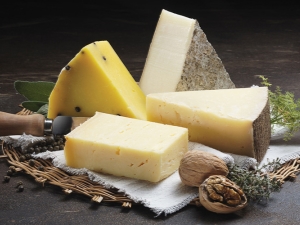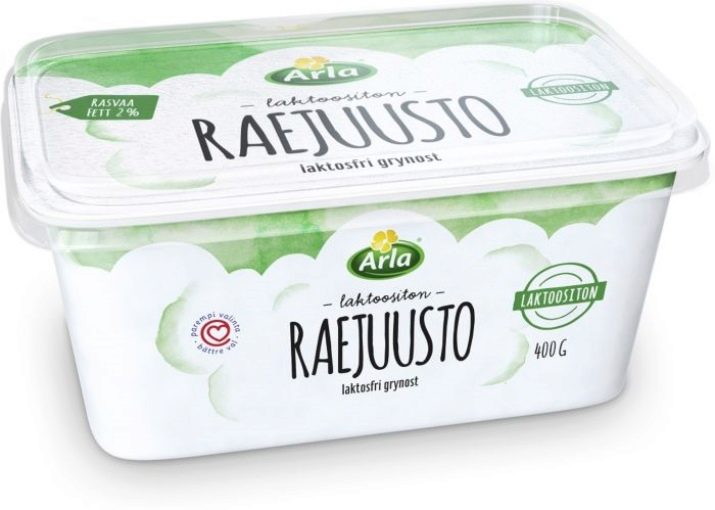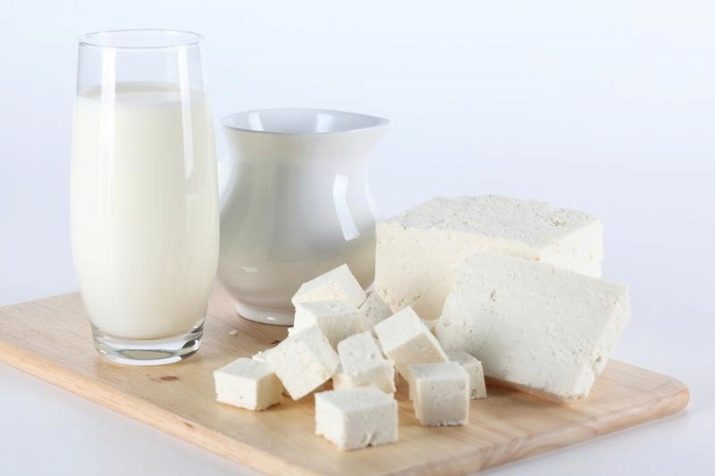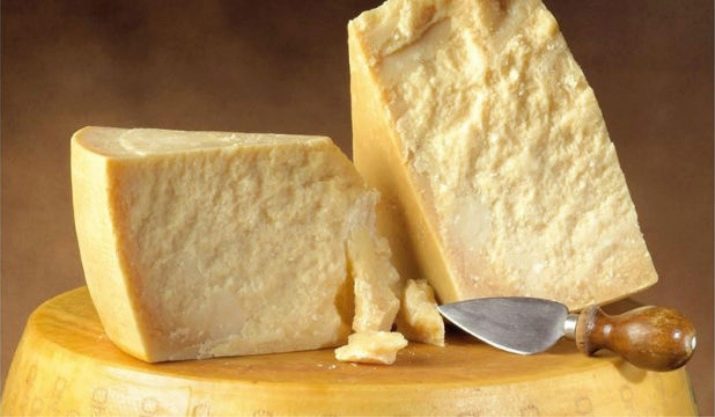Features Finnish lactose free cheese

Food from Finland has always been highly valued in Russia, especially in the North-West region. The dairy industry is well developed in this Scandinavian country, so it is not surprising that Finland was one of the first to master the production of lactose-free dairy products, which today are becoming increasingly relevant.Therefore, it is worth considering the features of Finnish lactose-free cheese and the range of its most popular varieties.
Who is harmful lactose?
From the point of view of evolution, a person should eat milk only in early childhood, and with age switch to other products. That is how the ancient people lived before the domestication of cows and other milk-giving animals. Despite the fact that since then many centuries have passed, the human body has not yet had time to completely restructure itself on drinking milk after early childhood. Therefore, a large proportion of adults in the world suffer from intolerance to dairy products in one form or another.
The intolerance of lactose, a carbohydrate saccharide contained in all types of milk, which is also known as “milk sugar,” is especially prevalent.
This is due to the fact that the enzyme intended for the breakdown of lactose, known as lactase, is actively produced mainly at an early age, and as the body matures its synthesis weakens. As a result, undigested lactose remains in the digestive system and serves as a breeding ground for the development of pathogenic bacteria. As a result, meteorism, diarrhea and sometimes even dermatitis may develop after consuming dairy products.
In addition to lactose intolerance, there is sometimes an allergy to it. It is caused by the appearance of the body's immune response to lactose entering the body, which initially causes symptoms similar to intolerance, but potentially can lead to much more detrimental effects, including angioedema and anaphylactic shock.
A lactose free product from another Finnish manufacturer, Pohjolan Juustola Hermanni, is deservedly popular in Russia. Another variant of the traditional lactose-free cheese is Pirkka kermajuusto. Lactose-free mozzarella is also available - Juustoportti Minimozza laktoositon. And Arla offers the Mediterranean version - Apetina aktoositon välimerellinen juustopala.
An important difference in Finnish dairy products without lactose is the presence of the word Laktoositon in their labeling. Its presence will allow to accurately distinguish the lactose-free variety of cheese from others. Another important symbol to choose is the heart icon, which means that the product is recommended by the Association of Finnish cardiologists and endocrinologists.
What are lactose free products?
Given that dairy products are characterized by enormous benefits and excellent taste, it is not surprising that in recent decades, the production of dairy products, almost not containing lactose, has been actively developing in the world. It is these products that allow people suffering from allergies and lactose intolerance to enjoy the taste of milk products, and is called lactose free. The threshold of lactose content, allowing to attribute the product to this class, is a concentration of 0.1%. The technology of production of lactose free cheeses is especially well developed at present.
Characteristic
Currently, there are three main approaches to the production of lactose-free cheeses.
- The first and main one is the production of lactose-free milk cheeses, from which lactose was removed at the processing stage using modern technology. Among them, the most common are the following:
- enzymatic removal of lactose (using fermented milk whey or direct administration of lactase);
- membrane ultrafiltration.
- The second approach is in the production of cheese from vegetable fats instead of dairy. Such a cheese will be significantly inferior to milky lactose-free cheese both in composition and benefit.
- The third approach is that traditional hard cheeses often contain a very small amount of lactose, since most of it remains in the whey that is removed during their production. At the maturation stage, additional lactose cleavage by refining bacteria enzymes occurs. Therefore, some manufacturers simply label their hard cheeses as lactose-free, without changing the technology of their production, since the lactose in them is really less than 1/10 percent.
It should be noted that the majority of Finnish cheese manufacturers, including Valio, use membrane ultrafiltration technology, which makes it possible to obtain various types of cheese with a very low content of lactose with almost no change in their taste and beneficial properties. Moreover, the technology of such filtering itself was developed by this particular Finnish company.
In turn, the use of enzymatic removal of lactose leads to a noticeable change in the taste of the resulting cheese - since lactose is split into simpler carbohydrates, the resulting product becomes sweeter and calorie.
Composition
The removal of lactose leads to some changes in the composition of the resulting cheese. First of all, its calorie content decreases - if for ordinary cheese it is about 350 kcal, then lactose free cheese most often has an energy value of no more than 250 kcal. Most often, lactose-free cheeses contain less fat - about 10%, while the fat content of ordinary varieties can reach 60%. But there is a little more protein in them - 35 g per 100 g of the product versus 25 g for cheese with lactose.
Benefit and harm
Unconditional benefit of cheese without lactose is that it does not lead to the development of allergic reactions or symptoms of intolerance, which means that it can be eaten to people who are contraindicated in common varieties. In addition, it is less calories, and therefore, can be recommended for use in diets. Such cheese can be harmful in case of abuse, especially for people suffering from heart disease or obesity.
You should avoid buying a product made with the use of vegetable fats, because its caloric content may be even greater than that of dairy.
Sorta
The main producer of lactose free cheese in Finland, and at the same time their main exporter to the Russian market is Valio. Its production includes the following main varieties:
- Oltermanni - it is a semi-solid variety with excellent creamy taste;
- Polar 15% - This is a variety with reduced salt content.
The original varieties of Castello, such as:
- White valkohomejuusto - white cheese;
- White with Red Chili homejuusto - White cheese with chili;
- Blue sinihomejuusto - variety with blue mold.
A lactose free product from another Finnish manufacturer, Pohjolan Juustola Hermanni, is deservedly popular in Russia. Another variant of the traditional lactose-free cheese is Pirkka kermajuusto. Lactose-free mozzarella is also available - Juustoportti Minimozza laktoositon. And Arla offers the Mediterranean version - Apetina aktoositon välimerellinen juustopala. An important difference in Finnish dairy products without lactose is the presence of the word Laktoositon in their labeling. Its presence will allow to accurately distinguish the lactose-free variety of cheese from others. Another important symbol to choose is the heart icon, which means that the product is recommended by the Association of Finnish cardiologists and endocrinologists.
You will learn more about lactose intolerance in the following video.


































